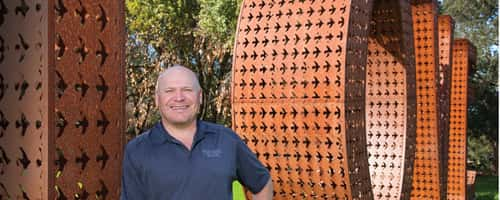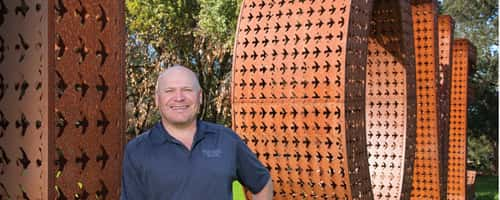
When the smoke cleared last fall in Wine Country after the most destructive firestorms in California history, the hospitality and wine industries quickly mobilized to bring back tourist dollars, especially during the slowest season of the year––winter. Without minimizing the despair over the loss of life and property, efforts to reach out to potential visitors began in earnest within days of the initial devastation. The goal was to vigorously spread the word that the fires were contained, the air was smoke-free, and it was safe to travel to Sonoma and Napa counties.
Sonoma County Tourism offered “quick facts” on its website for interested visitors, including putting its geographic scale into perspective: “Sonoma County is large––more than 1 million acres in size. More than 90 percent of the county isn’t affected by the recent fires.” The website also assured visitors that all 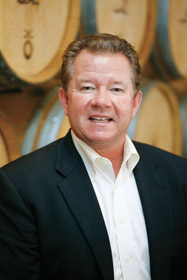 major highways in the county were open and many scheduled events were moving forward as planned.
major highways in the county were open and many scheduled events were moving forward as planned.
“Fans of the area can support Sonoma County wineries, breweries, cheese makers, farmers and local artisans,” the website explained. “Purchases of items that were bottled in, made in, grown in, brewed in, or otherwise came from Sonoma County help our local families recover economically.”
In downtown Napa, the Visit Napa Valley welcome center on Main Street reopened the day after the fires broke out. “We felt it was the right thing to do,” says Clay Gregory, the tourism group’s president and chief executive officer. “We saw 500 people there in two days, the vast majority being visitors who wanted to know what was open. We also turned our website into a community relations undertaking, not only to show visitors what was open, but also to list shelter sites for evacuees, among other things.”
Gregory says a significant number of homes were destroyed in Napa County, but there was little damage on the valley floor. “At least from our visitors’standpoint we were lucky that most of the fire damage was on hillsides.”
Rebuilding
Two months after the winemaking facility and tasting room at Paradise Ridge Winery in Santa Rosa burned to the ground, owner Rene Byck was making firm plans to rebuild. In the meantime, another structure on the property that was spared by the Tubbs firestorm on October 9 will be renovated to become a temporary tasting room.
“It’s a structure my dad built, sort of an art gallery, and we can turn that into a tasting room to be ready by this summer,” he explains. “We might even be able to do some small weddings on the property for some of the couples who booked for 2018. There were weddings we had to cancel for the remainder of 2017, and 35 to 40 weddings were planned for 2018.”
In December, Byck said it was still too early to plan for weddings and events. “We don’t know what the next six to eight months will fully entail for us. My main concern has been how the fires affected our employees. We’re not able to re-employ them all, but we’re trying to do the right thing, trying to be fair.”
Paradise Ridge’s vineyards are intact, says Byck, and he anticipates a normal harvest this fall. “All of the 2017 grapes we harvested were stored in one of the buildings that burned, so we lost approximately 8,000 total cases of wine in the fire, or about a vintage and a half, including some of the 2016 vintage that was already bottled. About 10,000 cases were stored offsite, so we can continue to sell that wine through the usual channels like our wine club, our tasting room in Kenwood and wholesale.”
Byck anticipates that if all goes well, the rebuilt winery will be open by summer 2019. “For the 2018 vintage, we’ll use a custom crush facility. We’re buying juice and will be making our wine temporarily at another location to be decided. We’re still sorting through all those details.”
Rebooting
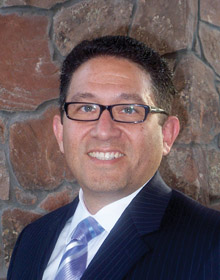 Percy Brandon, general manager at Vintners Inn in Santa Rosa, said the night of the Tubbs fire was chaotic. “We could see the flames at the Luther Burbank Center across Highway 101, and then a Sheriff’s deputy arrived to tell us to evacuate.”
Percy Brandon, general manager at Vintners Inn in Santa Rosa, said the night of the Tubbs fire was chaotic. “We could see the flames at the Luther Burbank Center across Highway 101, and then a Sheriff’s deputy arrived to tell us to evacuate.”
When guests were safely evacuated, Brandon and his facilities manager got busy trying to protect the structures, which are surrounded by 70 acres of planted vineyards. “We opened the irrigation system for the vineyards and flooded everything, emptying an irrigation pond. There were embers flying all over. The most important thing, after making certain nobody was hurt, was to save the property.”
Some early news reports about the extent of damage were inaccurate, causing even more chaos and worry. “Even CNN was saying that John Ash restaurant was burning. I was getting texts and calls from staff members wondering what was going on.”
The inn was pressed to reopen on October 18 because so many evacuees were calling, trying to find a place to stay. “It was important for us to reopen to help those people who had lost their homes,” says Brandon. “We reopened our café on the 19th and reopened John Ash on the 23rd. We needed to reboot the business as fast as possible to have income for our employees.”
Being forced to close John Ash for 14 days was painful for the bottom line. “The biggest hit was to our fine dining,” says Brandon. [See “Challenges in Hospitality”.]
Rebooking
The months of November and December were kinder to Vintners Inn. “Everyone who reserved for November showed up, with the exception of the wedding parties,” says Brandon. “November was much more back to normal in terms of bookings and dining, and we had about 500 guests for our annual Thanksgiving dinner. December is also looking great.” At the end of 2017, he said Vintners Inn and John Ash & Co. are scheduled posted its biggest December in history. Says Brandon, “It’s been an amazing bounce-back.”
Brandon is confident that business at Vintners Inn will rally within a matter of months. “We are currently under construction, building 34 more guestrooms and a full-service spa, though the fire set us back a few weeks on that project. We still anticipate having it finished and open by August.”
Hans Fahden Vineyards, along Petrified Forest Road near the Napa County line, narrowly escaped major damage from the Tubbs fire, but still had to close for 12 days. Co-owner Karen Fahden says four weddings were cancelled, but of those four at least one bridal couple has already rescheduled for this year. “The three other couples were fast on their feet and all made something work out by changing locations,” she says. “It wasn’t the scenario they had planned for, but they ended up getting married anyway.”
One couple visiting from the Midwest were engaged in Calistoga during the evacuation of that town, says Fahden. “They’re coming back this year to get married at the winery. Our event center, gardens and ponds are all fine. There was some burned brush but we have cleared that out and by spring it should actually look much better than before. Generally speaking, most people have been sensitive to the situation and want to know how they can help. A Marin couple want to get married in Wine Country so they can bring us business, and I’ve heard from other couples who see that as very important.”
Scary visuals, bad optics
The perception of the fire damage in the wake of national and international media coverage had many people believing the whole region had been wiped off the map.
 “Those visuals on TV were hard to get out of people’s minds,” says Michael Honig of Honig Vineyard & Winery in Rutherford. “We had to let them know that Napa didn’t all burn down, and our winery was back open for visitors within four or five days after the initial fire. Now we’re telling people that the wines are still great, the restaurants are still great, and it’s time to come back to Napa.”
“Those visuals on TV were hard to get out of people’s minds,” says Michael Honig of Honig Vineyard & Winery in Rutherford. “We had to let them know that Napa didn’t all burn down, and our winery was back open for visitors within four or five days after the initial fire. Now we’re telling people that the wines are still great, the restaurants are still great, and it’s time to come back to Napa.”
In mid-December, Honig said his winery’s guest count on weekends was strong, but weekdays were still slow. “We’re by-appointment-only, and permitted for 100 guests per day. On a normal weekday we might see 20 guests, but one day this month we had only six and on another day only four.”
Honig mingles with many of his tasting room guests, and on a recent slow weekday he chatted with three “high-spend” couples visiting together from Ohio. “There was a fourth couple that had planned to make the trip, but when they heard about the fires, they cancelled.
The other three couples came and discovered they could get into any restaurant or hotel they wanted. They were texting and emailing the couple back in Ohio: ‘You guys made a big mistake! Look at how much fun we’re having!’”
Sara Brooks, general manager of the Napa River Inn, said two weeks after the fires were out she was taking calls from potential hotel guests who wanted to visit, but were worried about the optics. “One man even asked me, ‘Are we going to be the jerks riding around in the back of a limo sipping wine?’ I reminded him that he would be giving that limo driver a job. Once you convey that message, they feel much better about it.”
Open for business
If recent packed hotels and restaurants in Yountville are any indication, Napa Valley’s annual “Cabernet Season” marketing is bringing back the visitors. Gregory says Hotel Yountville had what it calls its best December ever, Bottega restaurant was at maximum capacity on a recent Thursday night, and even the Oxbow Public Market in downtown Napa is bustling again with locals and visitors even on typically less-crowded weeknights.
“For better or worse, we learned a lot when we went through the 2014 earthquake here,” says Gregory. “From a communications standpoint, it shaped how we handled the fire crisis. But with the earthquake, only downtown Napa had issues, and we were comfortable getting back to normal right away. But this time it was different. The entire valley was surrounded by fires and the uncertainty went on for days. We weren’t comfortable turning the ‘open for business’ sign back on as quickly as we did with the earthquake.”
Napa is still perceived as one of the top areas in the world, says winery owner Honig. “That thinking is not going away. We’ve been through fire and earthquakes before, and visitors realize that Napa is still here.”
Symbol of hope
Paradise Ridge owner Byck doesn’t anticipate running into any code or permitting red tape when 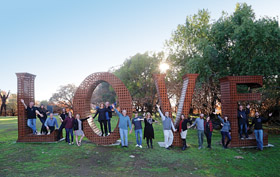 rebuilding begins on the winery. “It may give us an opportunity to make some improvements to the winery that we wanted to improve before, but if changing those things bogs us down in design review and so forth, we’ll re-evaluate.”
rebuilding begins on the winery. “It may give us an opportunity to make some improvements to the winery that we wanted to improve before, but if changing those things bogs us down in design review and so forth, we’ll re-evaluate.”
Byck says the LOVE sculpture on the winery property, which was unharmed by the fire, has taken on a life of its own from extensive media coverage and social media sharing, and he wants people to see that as a symbol of hope. “In a couple of years we will have put this all behind us. I get more emotional from a kind gesture from someone than I do looking at the winery ruins. There are still a lot of people here in Sonoma County that are hurting and need our help.”
Challenges in Hospitality
In the aftermath of last October firestorms in Sonoma and Napa counties, many tourism-oriented businesses lost significant revenue.
Vintners Inn in northwest Santa Rosa was spared direct damage from the Tubbs fire on October 9, but flames were burning in the property within 80 yards of the Brandon’s farmhouse, forcing a middle-of-the-night evacuation of the fully booked inn. The 44-room hotel, which includes John Ash restaurant and a large event center, was closed for two weeks, according to Percy Brandon, the hotel’s general manager. In addition to lost revenue from booked rooms, the hotel lost seven wedding bookings––three scheduled for October and four more planned in November and December.
“Our power was out and we lost our phone system, but we used our mobile phones to reach all of our guests who had to cancel,” he explained in December. “By the Friday after the fire, we’d refunded $250,000. We lost 50 percent of our usual October business, including corporate and banquet events. That month in this county is the busiest month of the year. We usually earn in October what winter doesn’t give us.”
In downtown Napa, the Napa River Inn, a boutique hotel with 66 rooms, put up evacuees at no charge  while the Atlas Fire was actively burning in the hills east of the city. The hotel also hosted several different strike teams of firefighters from around the state who typically came and went in 12-hour shifts.
while the Atlas Fire was actively burning in the hills east of the city. The hotel also hosted several different strike teams of firefighters from around the state who typically came and went in 12-hour shifts.
“During the fire the hotel didn’t lose power, but we lost phone service,” explains Sara Brooks, the general manager. “Most of the downtown area lost phone service, but because we had power we also had Internet. Cell service was also out in most of the county, for four days at least. So we opened our lobby to anyone who needed Internet service to reach loved ones via email and social media.”
The week of October 8, Brooks says, the hotel was anticipating one of its busiest weeks of the year with a full house of guests enjoying the harvest season. “Instead, we were down 60 percent of what we anticipated making for the month of October. To put that in perspective, our gross revenue in a normal October is usually equal to revenue in December, January and February combined. But had the fire happened in August, the loss in business would have been far worse.”
Spreading the Word
During the slower winter months, Visit California, the state’s tourism commission, spent $2 million on advertising campaigns to encourage visitors to return to Sonoma and Napa counties following the October wildfires. “Tourism is the Wine Country’s lifeblood,” said the commission’s president and chief executive officer, Caroline Beteta, in a prepared statement. “Visiting now will help these communities recover. Many residents and businesses, even those not directly impacted by the fires, lost weeks of work as fires forced evacuations and road closures. Now we need to do our part to help the recovery.”
The commission’s paid media campaign included a full-page advertisement in the Sunday New York Times on November 12, together with paid social media and digital display ads. An online TV spot also appeared in January.
To showcase the region, Visit California partnered with Food Network chef Tyler Florence and other sponsors to create The Grateful Table event. The special Thanksgiving-themed dinner on November 21 brought together hundreds of people for an immense shared feast at a series of long tables set in a vineyard that straddles the Sonoma and Napa County line. Multiple co-sponsors, including Sonoma County Tourism and Visit Napa Valley, worked to get out the word that Wine Country was back open for business.
All ticket sales from the dinner benefitted the Sonoma County Resilience Fund, Napa Valley Community Disaster Relief Fund, and the Mendocino County Disaster Fund.
Sonoma Strong & Open For Business
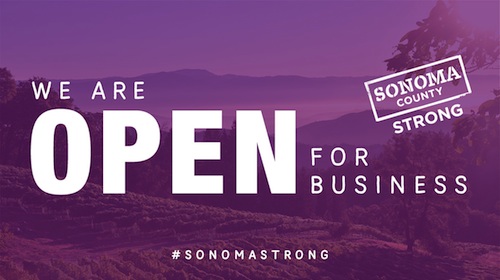
“During the fires, Sonoma County Tourism paused our normal, external ‘Come Visit’ marketing and sales campaign, and focused on a more internal ‘Sonoma Strong’ message, so we could be unified throughout the county,” says Tim Zahner, chief operating officer of Sonoma County Tourism. In addition, the organization’s board of directors approved investing up to $750,000 from reserve funding to counteract a downturn because of the fires.
In the aftermath, Sonoma County Tourism took immediate action to spread the word that Sonoma County is open for business. “We corrected misinformation in the media and contacted all of our meeting planners and tour operator customers as well as everyone in our email database with updates and factual information,” says Zahner. In addition, 50,000 post cards were mailed to travelers from their database, encouraging them to return to Sonoma County for a visit. “Our sales team has increased their outreach to meeting planners,” he adds. “And our marketing and public relations team is continually creating content and bringing in outside media to show that we’re open for business and ready to share our passion for Sonoma County’s food, wine, agriculture and scenic beauty.”
Author
-

Jean Doppenberg is a lifelong journalist and the author of three guidebooks to Wine Country.
View all posts


